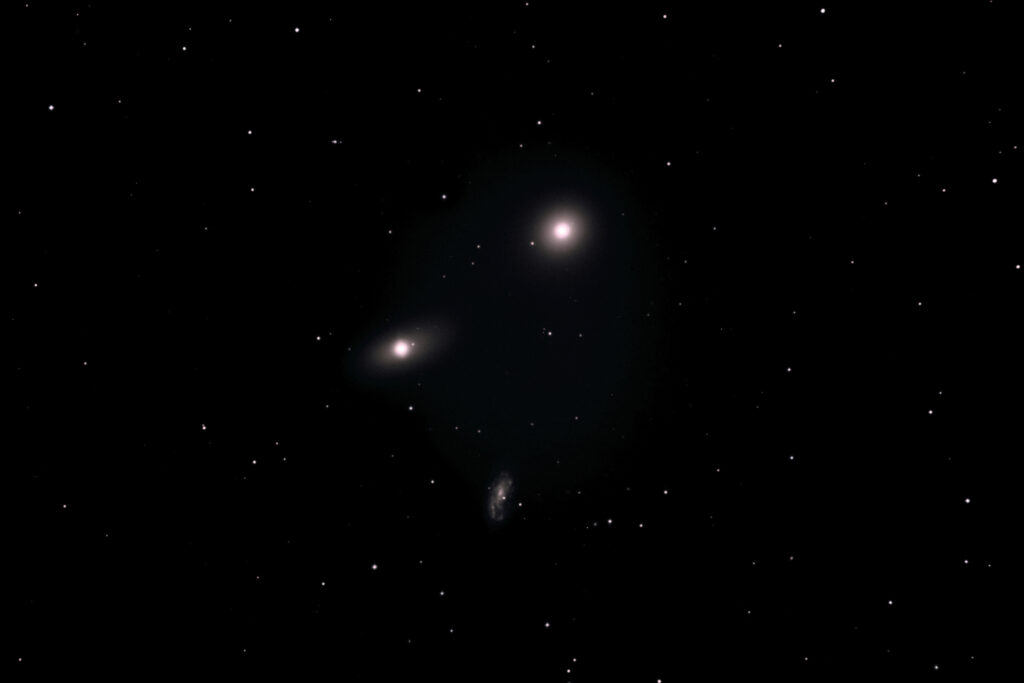A trio of prominent galaxies in the constellation Leo. The brightest is M105 (top, mag 9.5) followed by NGC3384 (left, mag 10.8) and NGC3389 (bottom, mag 11.8). The two brighter galaxies are "ellipticals" while the other is a "spiral."
This image provides an excellent opportunity to study the differences in these two major types of galaxy. Spiral galaxies comprise about 50% or all known galaxies. They are easily recognized by their central bulge surrounded by spiral arms.
Elliptical galaxies have no spiral arm structure, but rather are circular to elliptical in shape with no defining features. About 25% of known galaxies are elliptical. They are classified according to their oblateness, with E0 galaxies being circular, and E7 being flattened ellipsoids. This classification system is illustrated well by looking at M105 and NGC3384 in this image. M105 is a nearly circular "E1," while NGC3384 is a much more flattened "E6." These two galaxies are part of a large cluster of galaxies that includes M95 and M96 (in Leo).
By measuring the apparent luminosity of Cepheid variable stars in some of the member galaxies, and converting to actual luminosity using a distance modulus formula, the distance of this cluster is assumed to be 40 million light years.
The small spiral galaxy in this image (NGC3389) is not a part of the cluster, but rather is a far more remote "background" object. This conclusion is based on the much greater "redshift" in its spectrum than the redshifts for the other two galaxies (which are nearly identical).
In 1997, based on data obtained from the Hubble Space Telescope, NASA concluded that a supermassive star-gobbling black hole (50 million solar masses) lurks in the core of M105.
Galaxy Trio in the Constellation Leo
Date Taken:December 29, 2008
Location Taken: Conditions of Location:FWHM 2.0
Equipment Used:14.5" Ritchey-Chretien telescope, SBIG STL11000 CCD camera, Astrodon RGB filters, TCC, PIR.
Processing Used:9 x 600 seconds luminance, 12 x 90 seconds RGB, guided, 1x1 binning, processed in Maxim DL and Photoshop (total exposure 2.5 hours).
Distance from Location:40 million light years
Constellation:Leo (the "lion")
Other Link:
